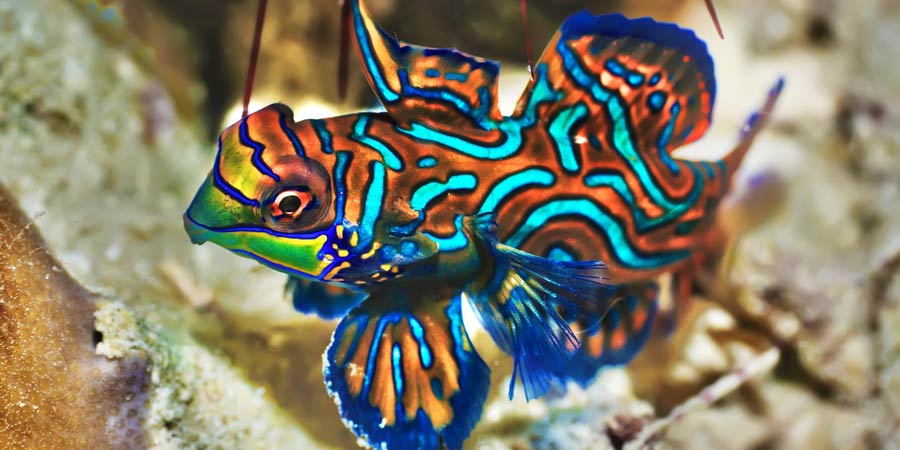
Scientific name : Synchiropus splendidus
Family : Callionymidae
Size : Up to 6 cm long

Scientific name : Synchiropus splendidus
Family : Callionymidae
Size : Up to 6 cm long
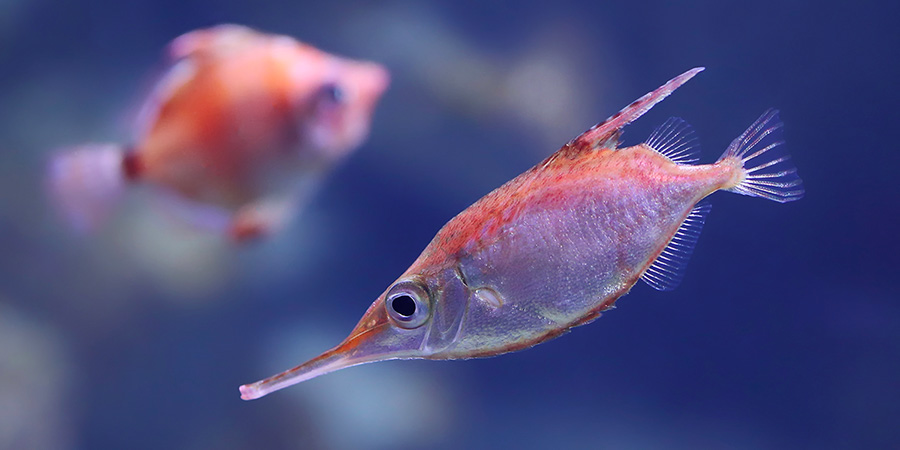
Scientific name : Macroramphosus scolopax
Family : Centriscidae
Size : Up to 23 cm
Depth : Up to 600 m
Distribution : Mediterranean, Atlantic and Indo-Pacific, in tropical or temperate latitudes.
Morphology : The body is oval, fairly high, and slightly flattened to the sides. Its tiny mouth has no teeth, and forms an elongated tube.
Biology : It is a herd fish which means that it lives as part of a school.
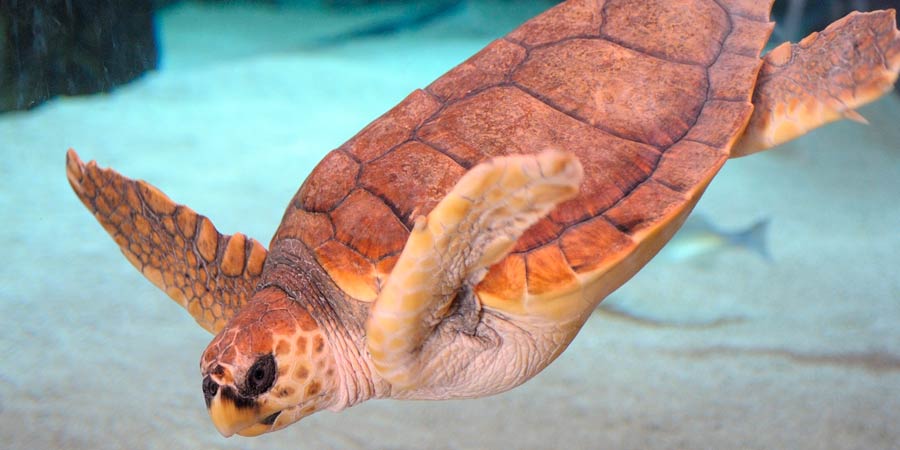
Scientific name : Caretta caretta
Family : Cheloniidae
Size : Up to 120 cm
Distribution : Indian, Atlantic and Pacific oceans, Mediterranean sea
Morphology : It’s a reptile, so it has lungs, and it has to come to the surface to breathe. It can hold its breath for a few minutes while swimming actively to several hours at rest.
Biology : It’s a reptile, so it has lungs, and it has to come to the surface to breathe. It can hold its breath for a few minutes while swimming actively to several hours at rest.
Protection status : Cites annex 1, regulation EC 338/97: Annex A, Bonn Convention Annex 1, Bern Convention: Annex 2.
IUCN red list : Vulnerable
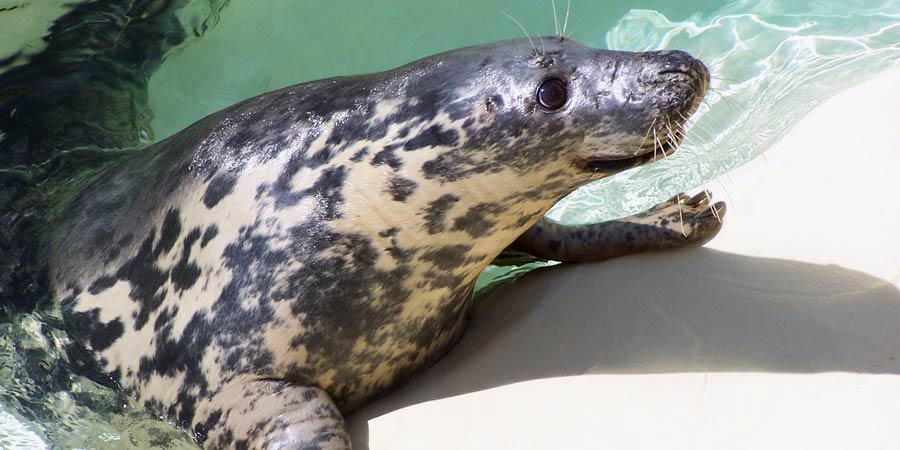
Scientific name : Halichoerus grypus
Family : Phocidae
Geographical distribution :
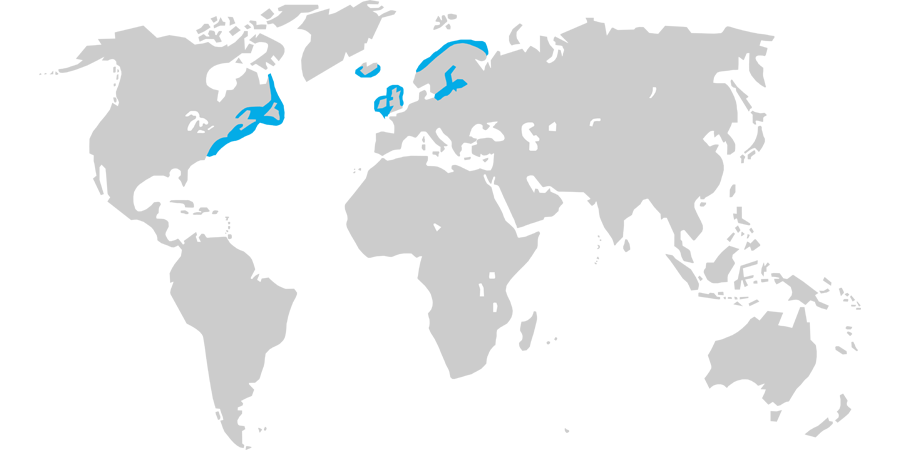
Large colonies of seals are situated in England, Scotland and Ireland. There are two small colonies of grey seals in Brittany, France at Molène-Ouessant and the Sept-Îles. The stranded seals that were recovered by our treatment centre came from these colonies.
The Aquarium has been providing a home to grey seals since its creation in 1933.
– Okéra, Titounette, Sylvestrine and Charlie (the only male in the pool) were rescued as pups aged between 1 or 2 months after being stranded on beaches along the basque and landes coastlines.
– Naïa (16 December 2005) and Noëlla (Christmas Day in 2009) were born at the Aquarium, following the mating of Charlie with Okéra.
Seals usually feed on fish. Each seal eats about 4 kg of mackerel at each meal.
They molt, shedding their fur twice a year.
Under the water, you can see them swimming or sleeping in nooks and crannies, sometimes in the most surprising positions.
There are two main characteristics that differentiate seals from sea lions :
– Seals do not have any external ears, they only have an auditory canal opening.
– They cannot bend their hind flippers so they crawl when on land, whereas sea lions can rotate their hind flippers to the ground and hop.
Our seals are not trained, but we do encourage them to do different exercises for medical reasons and to facilitate medical care and contact between the keepers and animals.
After a gestation period lasting 11 months, the mother seal gives birth during the winter and then feeds their single pup for 21 days before abruptly abandoning her offspring. Many young pups die as they are still too young to fend for themselves. Others are carried along by the sea currents that then wash them up onto the Atlantic coastline.
Grey seals weigh 15 kg at birth and 50 kg when they are weaned (3 weeks later), and when they are found stranded on the beaches, they only weigh 10 to 15 kg. Every year, the Biarritz Aquarium recovers 2 or 3 seals that are treated and nurtured to fatten them up, they are tagged before being released back into the wild near Brest. This operation is part of the natural heritage programme called l’Observatoire du Patrimoine Naturel.
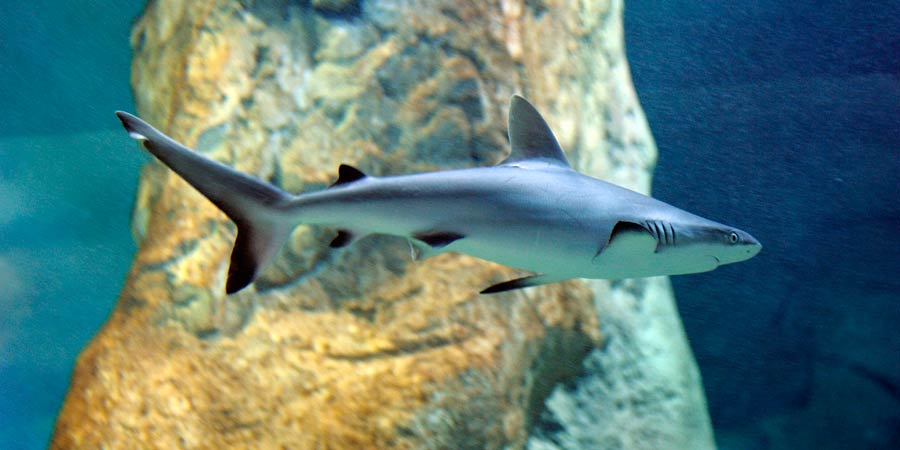
Scientific name : Carcharhinus amblyrhynchos
Family : Carcharhinidae
Size : Up to 255 cm
Depth : Up to 280 m
Distribution : Red sea, Indian ocean, Pacific ocean
Morphology : Medium sized shark. The snout is rounded. It is grey with a white belly. All of its fins, except for the first dorsal fin, are black at the tip.
Biology : It lives alone or in schools near reef areas in search of fish, cephalopods and crustaceans on which it feeds. It is a viviparous species (the embryo grows inside the female’s belly). It can give birth to several young (6 max.).
IUCN red list : Minor concern
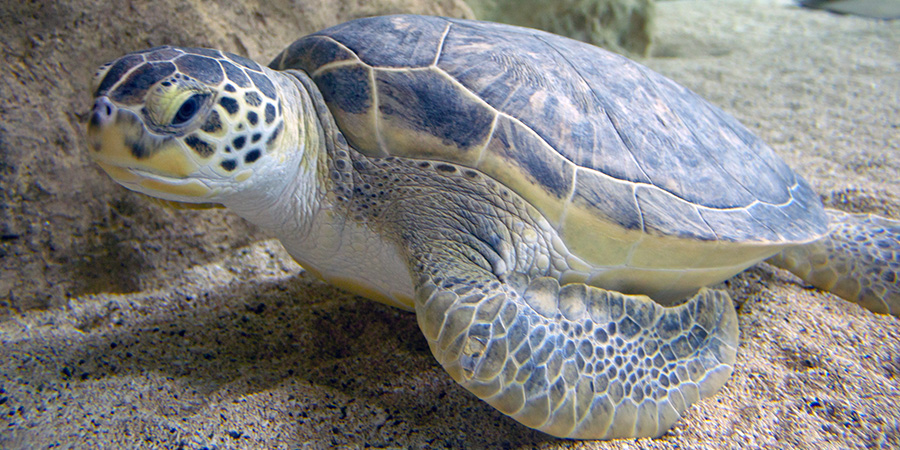
Scientific name : Chelonia mydas
Family : Cheloniidae
Size : Up to 140 cm
Distribution : Indian, Atlantic and Pacific oceans, Mediterranean sea
Morphology : It’s a reptile, so it has lungs, and it has to come to the surface to breathe. It can hold its breath for a few minutes while swimming actively to several hours at rest.
Biology : The green sea turtle’s diet varies with age : baby turtles are carnivorous, then once they are adults, turtles become herbivorous.
Protection status : Cites annex 1, regulation EC 338/97 : Annex A, Bonn Convention Annex 1, Bern Convention : Annex 2.
IUCN red list : Endangered
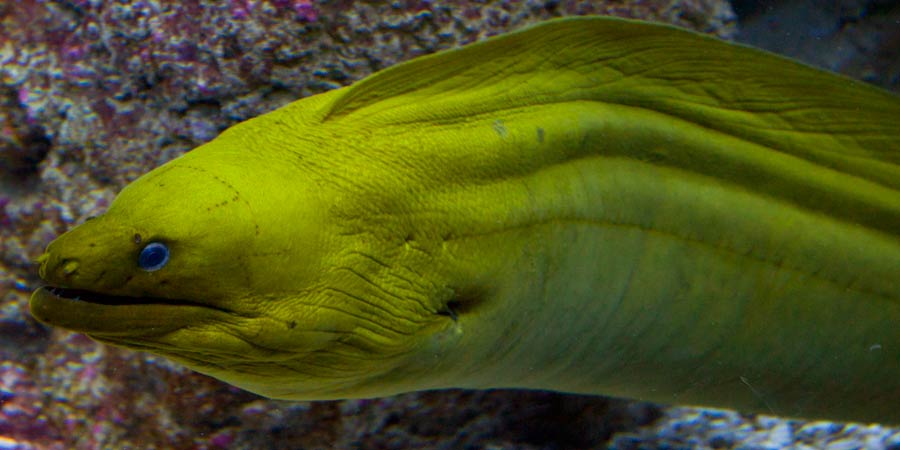
Scientific name : Gymnothorax funebris
Family : Muraenidae
Size : Up to 230 cm
Depth : Up to 40 m
Distribution : West and East tropical Atlantic
Morphology : Uniformly coloured brown to olive green serpentine body.
Biology : It moves mostly at night to hunt fish, crustaceans and cephalopods. During the day, it remains sheltered, hidden in rocky faults.
IUCN red list : Least concern
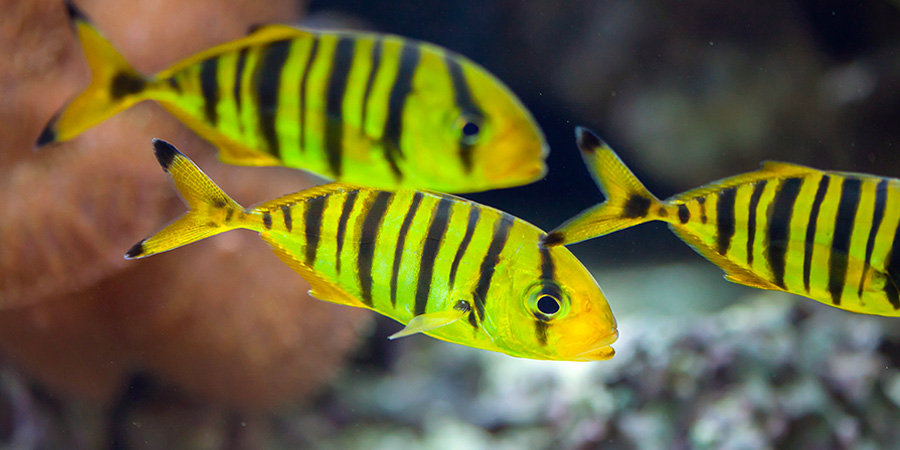
Scientific name : Gnathanodon speciosus
Family : Carangidae
Size : Up to 120 cm
Depth : Up to 80 m
Distribution : Red Sea, Tropical Indo-Pacific West and Central
Morphology : The livery is golden yellow with thin vertical black stripes.
Biology : It frequents the shoreline, and can accompany larger animals.
IUCN red list : Least concern
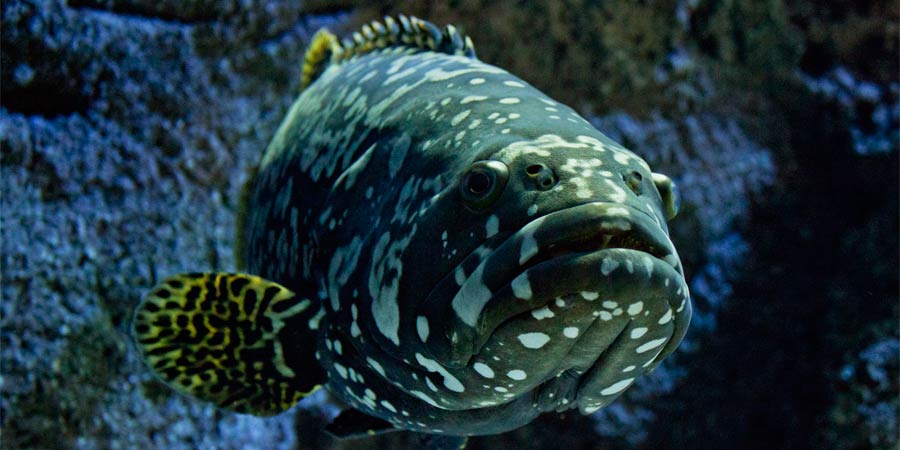
Scientific name : Epinephelus lanceolatus
Family : Serranidae
Size : Up to 270 cm long
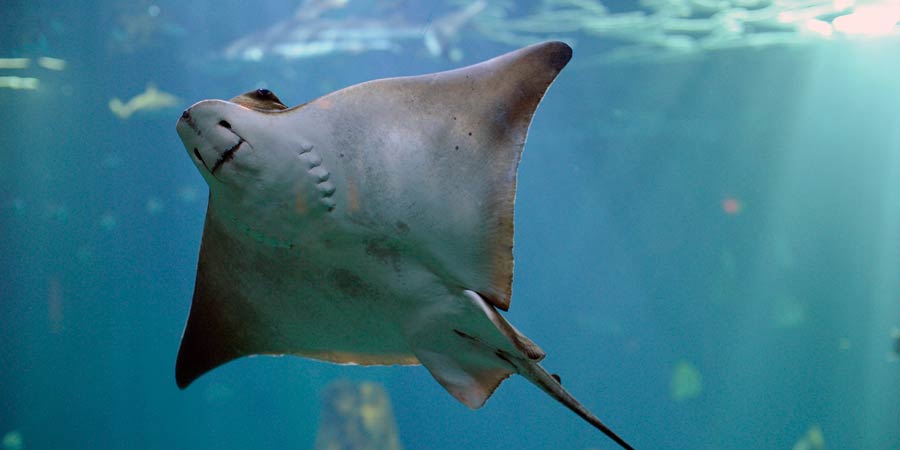
Scientific name : Myliobatis aquila
Family : Myliobatidae
Size : Up to 180 cm
Depth : Up to 300 m
Distribution : East Atlantic, Mediterranean, Southwest Indian ocean
Morphology : It has a rounded snout and pointed pectoral fins. It is brown to black on its back and light, almost white on its belly. The whip-like tail is twice the length of the body.
Biology : They swim alone or in schools in open water or above the bottom. It feeds on crustaceans, bivalves or fish. It is an ovoviviparous species (babies are born already formed. They have fed and developed in eggs that have hatched inside the female). Gestation lasts 6 to 8 months and the female can give birth to several young (3 to 7).